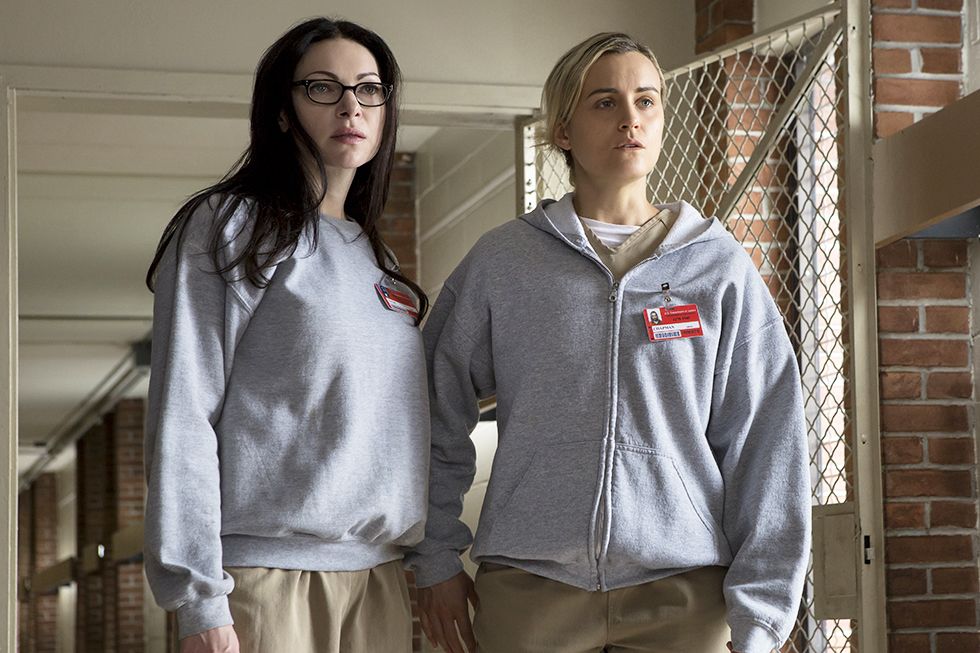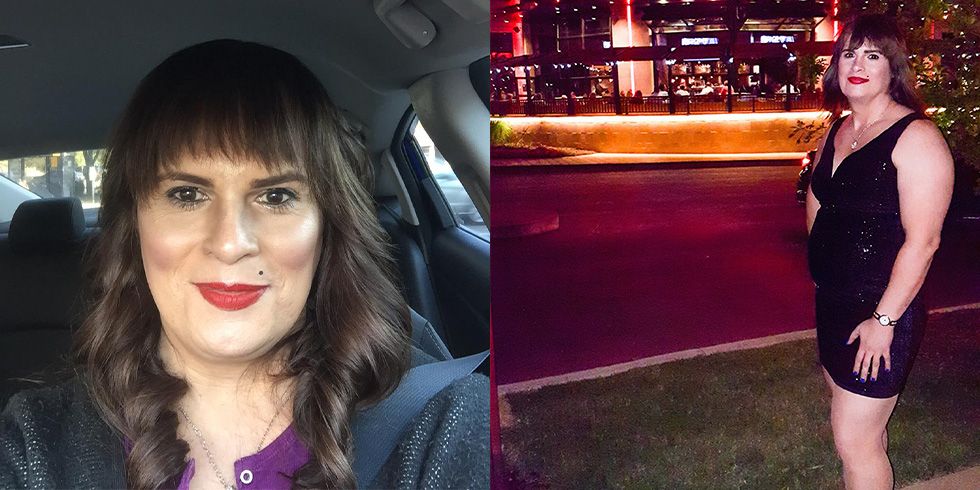Caroline Rose Giuliani just got candid about her love life. Caroline, the daughter of former New York City mayor Rudy Giuliani, wrote an essay for Vanity Fair about being a “unicorn” in relationships (i.e. a third partner for couples looking to have a threesome).
As part of the essay, Caroline details her own journey to discovering her sexuality. “I had known for some time that I was at least bisexual but had barely explored that side of my sexuality,” she wrote.
At one point, she describes how her experience as a unicorn in one couple’s relationship helped her figure out her sexual identity.“Texting with Isabella a few weeks after our threesome, I told her about feeling Oliver’s passion for her permeate me,” she wrote. “My heightened response to their energetic flow also started me on the path to identifying as pansexual, which feels more precise than bisexuality. I am attracted to people based on their presence and energy regardless of their biological sex, gender, or gender identity.”
While the two terms can be confused, pansexuality is different from bisexuality.
Bisexual is a term used to describe a person who is emotionally, romantically or sexually attracted to more than one sex, gender or gender identity, according to the Human Rights Campaign (HRC). “Pansexual” is used to describe a person who can be emotionally, romantically, or sexually attracted to people of any gender, HRC says.
“’Pan’ comes for the Greek word ‘all,’” says Holly Richmond, Ph.D., a certified sex therapist and marriage and family counselor. “Pansexual is not bi-sexual, it’s all sexual.” That means a pansexual person could be attracted to a man, woman, a transgendered person, or a non-gendered person (a person who chooses not to identify themselves by gender), Richmond says.
Caroline is far from the only notable person to identify as pansexual. Janelle Monáe and Miley Cyrus have also said they identify with pansexuality.
Below, experts offer up all of the other major info you should know about it.
1. It’s a real thing.
“There are a lot of stereotypes and misconceptions about pansexuality, and one of the most prominent ones is that pansexuality doesn’t exist, or isn’t a ‘real’ sexual identity. This is absolutely false,” says Corey Flanders, Ph.D., an associate professor of psychology and education at Mount Holyoke College. If a pansexual’s sexual identity is denied by others or they’re prevented from accepting their own identity, it can stifle them to a certain degree, she says.
2. It’s not uncommon for people who once identified as bisexual to become pansexual.
Like Miley and Janelle, some people who formerly identified as bisexual later identify as pansexual. “Bisexuality as a term has experienced criticism for adhering to a binary system of gender, a.k.a. ‘I’m attracted to men and women,’ even though this strict definition of bisexuality doesn’t fit many bisexual-identified folks,” saysRena McDaniel, who has a master’s degree in counseling with a specialty in gender and sexual identity.
Pansexuality, on the other hand, is seen as “more inclusive” of people who are transgender or identify outside of the gender binary of man or woman, she says.
3. Younger generations are more likely to identify as pansexual .
There seems to be an age gap with this label. “Younger people are more likely to use pansexual as a term, while slightly older populations are more likely to use bisexual,” McDaniel finds.
4. Pansexuality doesn’t translate to promiscuity.
Pansexuals may be attracted to all people, but that doesn’t mean that they’re going to have sex with anyone, Richmond says. “Pansexuals can be very choosy,” she says.
5. Pansexuals want relationships, too.
“One of the ways society shames those who are attracted to more than one gender is to say that they are ‘greedy’ or a ‘commitment-phobe,'” McDaniel says. “However, no one says this about heterosexual folks who also have about half the population of the world to choose from.”
Being attracted to more people has nothing to do with the kind of relationship a person wants to have with their partner or partners, she adds.
6. The term pansexuality only emerged recently.
Richmond says she first started learning about pansexuality five or six years ago at a conference for the American Association of Sexuality Educators, Counselors, and Therapists. Although pansexual people have definitely been around longer than that, the general public is just starting to acknowledge the term and learn what that sexual identity means.
7. Pansexuality has nothing to do with gender.
People often mix up gender identity and sexual identity but they’re not the same. “Pansexuality is a term that refers to sexual orientation, who someone is attracted to,” McDaniel says. “It is completely different from gender identity, which refers to how someone identifies their own gender.”
So pansexuality isn’t the same as transgender or gender non-binary, for example. Using pansexual as a label for your sexual orientation doesn’t say anything about your gender identity or the gender identity of the person you’re into, she says.
8. Less than 1 percent of the population identifies as pansexual.
Because pansexuality is a fairly new concept to many people, it’s hard to pinpoint exactly how many identify with the label, Richmond explains; she puts her best estimate at less than 1 percent. But as more people become aware of pansexuality, there may be more people who come to identify that way, she says.
9. Pansexuality isn’t just about sex.
When pansexuals are making a romantic connection, it’s very much about connecting with the person—not the gender, Richmond says. “It’s about developing meaningful relationships.”
Source: Read Full Article

